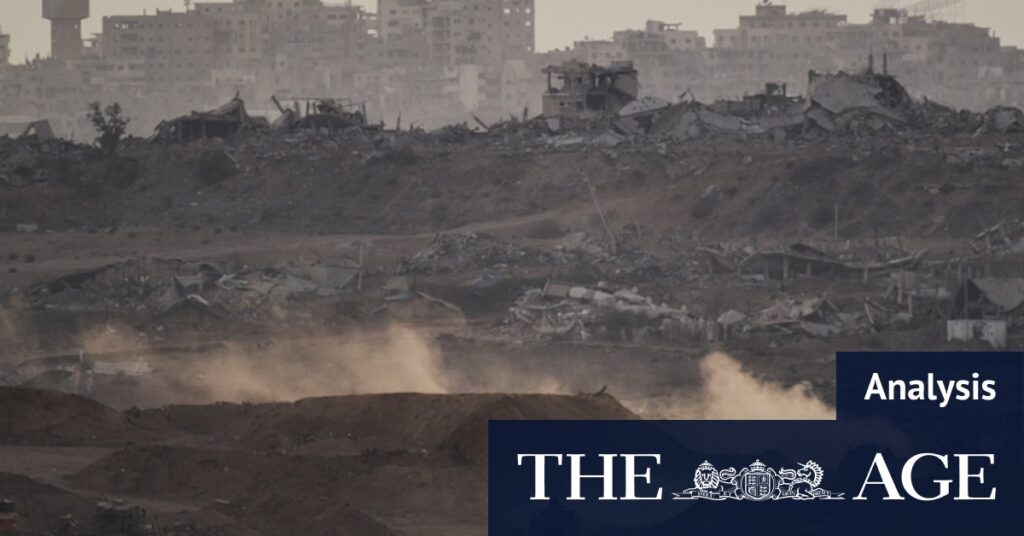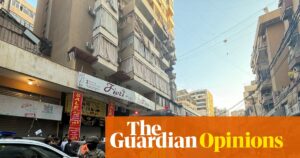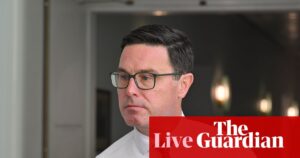
Palestinians in Gaza faced a stark reminder of the fragile nature of peace in the region when a grisly video emerged showing Hamas fighters executing seven men in a public square. This incident occurred just as world leaders, including US President Donald Trump, were advocating for peace in the region. The video, verified by Reuters, depicts the men being shot from behind as civilians watched, highlighting the ongoing volatility in Gaza.
The executions, confirmed by an unnamed Hamas source, took place on Monday night. They starkly contrasted with the absence of Israeli bombings or military incursions, yet underscored that the conflict in Gaza is far from over. The men were reportedly killed for allegedly collaborating with Israel, signaling Hamas’s intent to reassert its authority in the region.
Peace Plan Under Scrutiny
President Trump’s peace plan, which outlines 20 points aimed at establishing a ceasefire and releasing Israeli hostages, faces significant challenges. The plan proposes amnesty for Hamas fighters willing to disarm, safe passage for them to other countries, and the establishment of a new transitional authority to govern Gaza. However, the recent executions suggest Hamas is not interested in relinquishing control.
Eyewitness accounts from Gaza are scarce due to media restrictions, but reports from the BBC indicate that Hamas has mobilized 7,000 fighters to regain control. Reuters estimates that at least 33 people have been killed by Hamas since Monday, while Agence France-Presse notes the creation of a “deterrence force” to suppress opposition.
Continuing Violence and International Reactions
The violence is not limited to Hamas actions. The Israel Defence Forces (IDF) reportedly opened fire on Palestinians approaching their positions in northern Gaza, resulting in three deaths, according to the Gaza Health Ministry. Although Israel has withdrawn to positions held last August under the ceasefire terms, the IDF still controls significant portions of Gaza, areas that Hamas considers Palestinian territory, raising the potential for further conflict.
Compounding the tension, Hamas has yet to fulfill its promise to release the bodies of 28 hostages who died in captivity, having released only four. The Hostages and Missing Families Forum has urged Israeli leaders to suspend the ceasefire until all bodies are returned, emphasizing that agreements must be honored by both sides.
Humanitarian Concerns and Diplomatic Efforts
Israel’s response to Hamas’s non-compliance includes reducing the number of trucks allowed into Gaza from 600 to 300 and potentially closing the Rafah crossing in the south. This move risks further punishing Palestinian civilians, a recurring theme in the conflict. United Nations emergency relief director Tom Fletcher stressed the need for both sides to honor the ceasefire agreement to facilitate the delivery of much-needed aid.
“That does mean that Hamas has got to get the bodies home, as they promised,” Fletcher told the BBC. “But it also means that Israel has to keep the crossings open and allow us to deliver the aid that is so desperately needed at scale.”
While President Trump achieved a significant milestone in securing the ceasefire, the broader peace plan remains in jeopardy. The ceasefire holds, but the wider peace is still a work in progress. The first point of the peace plan aims for Gaza to become a deradicalized, terror-free zone, a goal that seems distant given current events.
Future Prospects and Challenges
Among the peace plan’s 20 points, the fourth requires Hamas to release all hostages, alive and dead—a commitment already broken. The seventh point calls for the immediate delivery of full aid to Gaza, a promise now in doubt. It is too early to determine if these recent incidents will unravel the ceasefire, but the past 24 hours suggest that the path to peace remains fraught with obstacles.
As the situation unfolds, the international community watches closely, aware that the fragile peace could easily collapse under the weight of unfulfilled promises and ongoing violence. The coming days will be crucial in determining whether diplomatic efforts can salvage the ceasefire and pave the way for a lasting resolution to the conflict.





